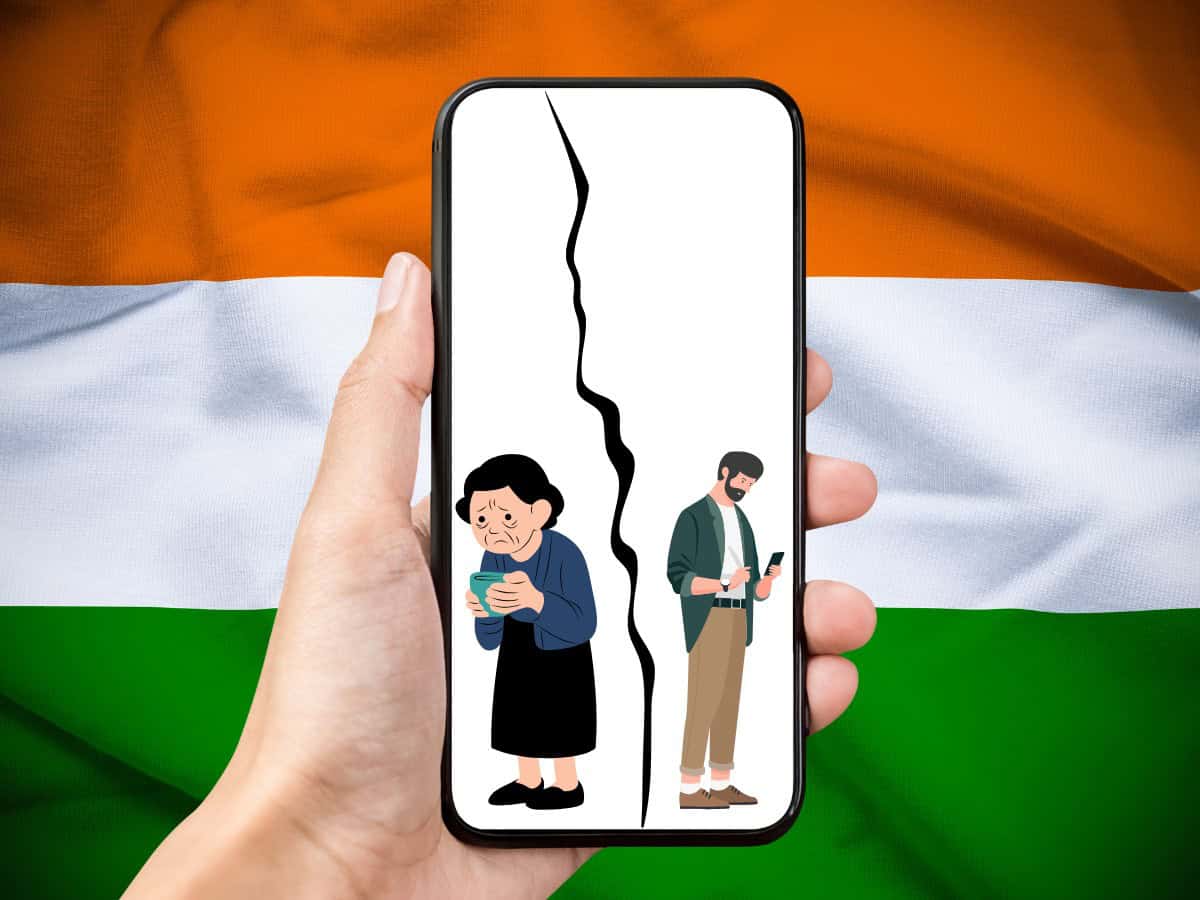
By Moumita Barman
As India races to digitise everything from welfare delivery to citizenship documentation, the promise of Digital India is proclaimed as a great equaliser—bridging divides, bringing governance closer to the people, and powering a trillion-dollar digital economy. But underneath this narrative lies a more uncomfortable truth: the digital push has not only left behind large sections of the population, it has also deepened existing inequities.
The Development Policy and Practice conference, organized by the Centre for Development Policy and Practice (CDPP) in Hyderabad, held on March 28, brought this issue to the forefront. Osama Manzar, founder of the Digital Empowerment Foundation (DEF), assessed India’s digital transition. Speaking on a panel about redistribution and dignity, Manzar urged the audience to rethink the development narrative that equates digital growth with social progress. “We talk about digital empowerment,” he said, “but have we ever asked who is empowered by it?”
No digital literacy
Manzar shared stories from DEF’s work in rural India, where many people do not even have basic digital literacy, let alone the resources to access online services. “People in remote villages have to travel miles just to get documents like Aadhaar printed,” he noted. What was designed as a system of inclusion has become a system of exclusion. “When public services go digital without human support, the poor become invisible,” he added. For Manzar, true digital empowerment must begin from the bottom up focusing on the last person in the line, not the first. He questioned the dominant approach of creating “centres of excellence” and instead advocated for creating “centres of inclusion.”
These points reflect a broader problem with India’s digital development model: it is top-down, urban-centric, and increasingly dependent on platforms and technologies that are inaccessible or alien to a significant part of the population.
Man-woman disparity
Despite high smartphone penetration, digital access in India is neither universal nor equitable. According to the National Family Health Survey (2019–21), only one in three women in India (33%) have ever used the internet, compared to more than half (57%) of men. Rural India faces an even more pronounced divide, with men twice as likely as women to have used the internet (49% vs. 25%).
Dalits, Adivasis, and people with disabilities face disproportionate barriers to accessing digital spaces—both in terms of physical infrastructure and systemic marginalisation. Even when access exists, digital literacy is often so low that individuals remain dependent on intermediaries or cyber cafés, leading to further exploitation.
The push towards digital public infrastructure has increasingly turned citizens into data points, often without informed consent or agency. These systems presume that everyone has access to a smartphone, stable electricity, and digital literacy. The reality is far more uneven. When welfare services—like food rations or pensions—are tied to biometric verification or OTP-based systems, even a small technological failure can mean denied entitlements and increased uncertainty.
No public policy discourse
What makes this exclusion worse is that it is often invisible in public policy discourse. The state continues to push digital solutions in the name of efficiency and scale while overlooking the human costs. The language of “minimum government, maximum governance” has become shorthand for a dehumanised, tech-driven delivery system that can be alienating and even violent for the marginalised.
As Shahida Murtaza, Professor, Women’s Studies & Director, Centre for Women’s Studies, Maulana Azad National Urdu University, said at the same conference, “When everything is digitised, the poor are expected to function like machines. But they are human beings with different realities, constraints, and contexts.”
The exclusion is not just digital—it is social and political. Caste, class, gender, geography, and language intersect to produce multiple barriers. An urban upper-caste male with an English education is far more likely to navigate and benefit from India’s digital systems than a Dalit woman in rural Jharkhand. This is not a glitch; it is a feature of how systems are designed—with certain bodies and lives prioritised and others pushed to the periphery.
Digital technology for control
Moreover, digital technologies are increasingly being used for surveillance and control. From predictive policing to facial recognition systems, the state’s embrace of tech has begun to mirror a stricter notion of governance. Marginalised communities, already over-policed and under-protected, are now being monitored through apps and databases that they had little role in shaping. The assurance of transparency often masks a growing asymmetry of power—where the state knows everything about the citizen. Still, citizens know little about how their data is being used or misused.
So, what would a truly inclusive digital policy look like?
Digital rights are human rights
First, it should begin with acknowledging that digital rights are human rights. Access to the internet, devices, and digital literacy must be treated as basic public goods. Second, it would require robust public investment in last-mile connectivity, vernacular content, and digital capacity-building—especially for women, Dalits, Adivasis, and disabled communities. Third, it would mean creating hybrid systems that blend human and digital interfaces, so that no one is denied service simply because they cannot use a phone or scan a fingerprint.
Fourth, policy design must shift from techno-solutionism to techno-solidarity. Digital systems must be participatory, accountable, and locally adapted. Finally, we must center dignity and justice in our digital future—not just efficiency and innovation.
The conversation sparked at the conference made one thing clear: if we are serious about inclusive development, we must look beyond GDP and digital dashboards and ask harder questions about power, design, and representation.
In a country as vast and diverse as India, technology can be a powerful equaliser, but only if it is democratised, decentralised, and grounded in lived realities. Otherwise, we are not building a digital India—we are building a digitally divided India.
(CDPP held a conference in Hyderabad on March 28, 2025, titled “Development Policy and Practice Conference, 2025.” This article is based on discussions during the inaugural session.)
Moumita Barman is a Senior Research Associate at the Centre for Development Policy and Practice (CDPP) in Hyderabad. CDPP is an independent research institution working on economic and public policy issues with a focus on the development of marginalised and vulnerable communities.



